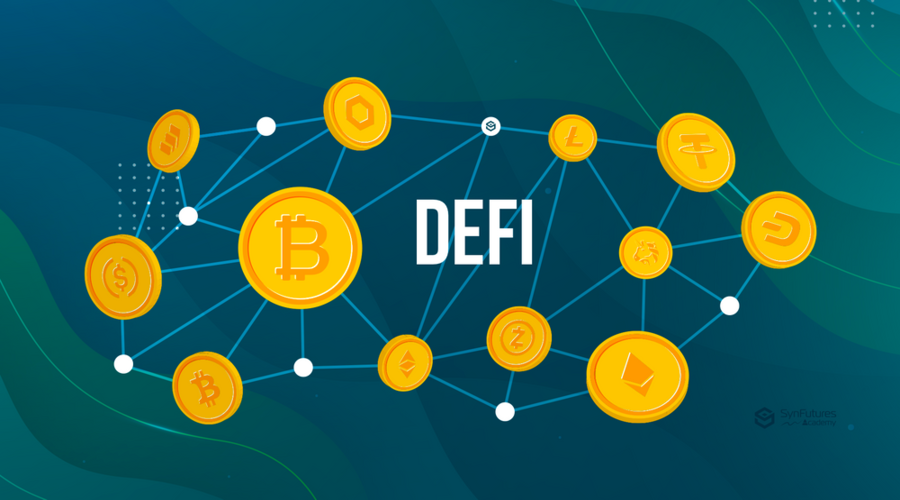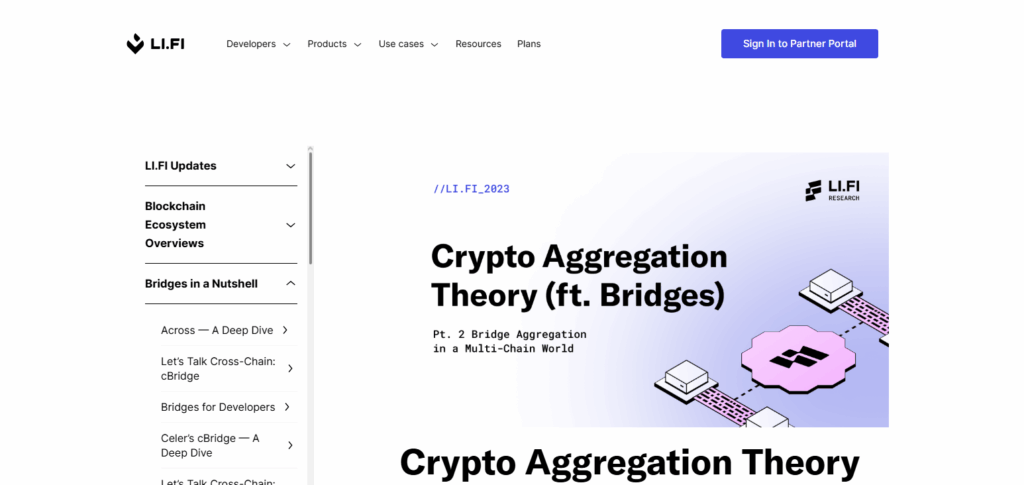In this article i will cover the How to Integrate Bridging Aggregator Fees with DeFi Protocols, a necessary step for developers who want smooth cross-chain transactions.
When fees are properly incorporated, users see clear pricing, routing becomes more efficient, and overall platform performance improves.
Whether you are designing a brand-new DApp or enhancing an existing one, you will find actionable steps, recommended tools, and best practices to guide you through the process.
Understanding Bridging Aggregators
Bridging aggregators simplify moving assets across blockchains by merging multiple bridge services behind a single easy-to-use interface. Rather than locking you into a single bridge, they gather potential routes from several providers and select the one that offers the best speed, lowest cost, and highest security.

By making it straightforward to hop between chains, these aggregators boost overall interoperability, accommodate a diverse array of tokens, and automatically calculate network fees and slippage. Notable implementations include LI.FI, Rango Exchange, and Socket. For DeFi projects that want to deliver fluid, cross-chain functionality, these tools are indispensable.
How to Integrate Bridging Aggregator Fees with DeFi Protocols

Example: Embedding LI.FI Bridge Aggregator Fees into a Yield Vault
Add LI.FI SDK or Widget
- Install LI.FI’s SDK for access to all bridge paths, DEXes, and liquidities

- Select JavaScript SDK, API, or embed widget based on whether you’re working on the frontend or backend
Set Fee Structure
- Define a transaction fee (e.g. 0.3%) charged on every bridge event
- Employ LI.FI’s fee abstraction to funnel that fee straight to your treasury address
- You can collect fees in the output token or convert them to a stablecoin
Integrate Fee Logic in Contracts
- Adjust your deposit contract to invoke LI.FI’s bridge call
- Implement logic to divide the bridged output:
- 99.7% into the user’s vault
- 0.3% sent to the treasury
- Leverage LI.FI’s smart routing for the best gas and slippage
Track and Review Fee Data
- Access LI.FI’s analytics panel to review:
- Volume for each route
- Total fees accrued
- Breakdown by token and chain
- Push the data to your backend for treasury and audit trails
Enhance UX and Compliance
- Present a clear fee summary to users before they finalize the bridge
- Offer opt-in fee tiers (e.g. lower rates for stakers or NFT holders)
- Confirm local rules if you treat fees as income
Why Integrating Aggregator Fees Matters
Clarity on Costs: When aggregator fees are included, users immediately grasp the full price of a cross-chain swap. This openness fosters confidence and eliminates surprises.
Smoother Interactions: Having live fee figures lets users plan better, leading to swifter, more reliable trades. Overall, the usability of DeFi apps gets a noticeable lift.
Smarter Path Selection: Up-to-date fee info empowers protocols to pick the cheapest and quickest bridge, maximizing both speed and economy.
Boosted Revenue Sharing: Aggregators that pass on fees let DeFi projects earn a cut, opening fresh funding avenues and ensuring everyone’s goals stay aligned.
Fewer Failed Transactions: Factoring in aggregator fees lets builders size gas and liquidity more accurately, reducing the number of costly, incomplete swaps.
Lean Protocol Operations: The live feed of fees not only sharpens logic but also tightens the overall workflow, making cross-chain operations faster and more resource-conscious.
Technical Requirements for Integration
Aggregator API or SDK Access: Secure connection to bridging aggregators via their APIs or SDKs is critical. These interfaces deliver fee schedules, routing paths, supported networks, and configurable transaction parameters.
Smart Contract Compatibility: Ensure that your DeFi protocol’s contracts are either EVM-compliant or already structured for multi-chain deployment, so you can seamlessly embed fee calculation and routing logic.
Backend Infrastructure: Deploy a resilient backend to query, cache, and format fee data from aggregators. It should incorporate fallback pathways to maintain service continuity if any aggregator becomes unavailable.
Frontend Integration: Design frontend widgets that can render live fee data, projected gas expenses, and comparative routing options in a clear and user-friendly manner.
Multi-Chain Support: Validate that support spans all relevant bridging networks, including wallet integrations, token standards like ERC-20 and BEP-20, and gas fee reconciliation.
Security Middleware: Leverage hardened middleware or open-source libraries to check bridge routes and authenticate fee data, thereby guarding against route manipulation and incorrect token deliveries.
Testing and Simulation Tools: Develop a comprehensive suite of unit tests and simulation environments to validate fee logic, transactional consistency, and the effectiveness of fallback mechanisms.
Security and Compliance Considerations
Fee Manipulation Prevention
Securely fetch fee data via signed message protocols or verified APIs, ensuring that every piece of data is authenticated and immune to tampering or spoofed fee entries.
Slippage and Front-Running Protection
Set strict slippage tolerances and program automatic reverts for exceeded limits. Employ batching, nonce management, or pre-signed transactions to lower the chances of pre-emptive, profit-seeking trades.
Smart Contract Audits
Subject all fee-routing and fee-collection logic to comprehensive audit cycles, examining for reentrancy, arithmetic errors, and any unintended execution that malicious actors could leverage.
Aggregator Reliability and Fallback Logic
Integrate at least two distinct aggregators and build fallback logic that reroutes transactions if one source is slow or provides outlier fee data, ensuring uninterrupted service.
Gas Fee Estimation and Overpayment Prevention
Leverage on-chain or off-chain gas estimation tools to predict costs accurately, and enforce caps that protect the wallet from excessive spending or failed transactions.
Compliance with Jurisdictional Requirements
Evaluate the specific regulatory environment for each target market, particularly if fee-splitting occurs. Introduce KYC or AML controls if the jurisdiction mandates, ensuring all data is encrypted and minimized.
User Consent and Fee Disclosure
Present fee structures in clear, understandable language and require explicit user confirmation before action. Transparency not only builds user trust but also aligns with consumer protection regulations.
Monitoring and Alerts
Deploy automated monitoring tools that can instantly flag unusual fee trends, unexpected bridge traffic spikes, or potential misuse of smart contracts as they happen.
Best Practices for Optimization
Smart Fee Caching: Temporarily store quote data from bridging aggregators to minimize API requests. Set a short refresh interval to balance speed and accuracy based on network volatility.
Multi-Aggregator Comparison: Connect to at least two bridging aggregators. This allows for side-by-side assessment of routes and fees, routing users to the lowest-cost, quickest option.
Transparent Fee Disclosure: Present a detailed, itemized fee summary to users, including aggregator, gas, and platform fees. Transparency cultivates trust and can reduce the risk of abandoned transactions.
Gas-Optimized Logic: Refine smart contract processes that involve fee calculations and transfers to minimize gas usage, particularly on networks like Ethereum where gas costs can be significant.
Adaptive Routing Mechanism: Build routing that modifies itself in real time according to liquidity and network state. This proactive approach can reduce the likelihood of slippage and failed transactions.
UI Latency Reduction: Fetch estimated fees and suggested routes simultaneously with interface components. This parallel loading decreases the time users wait for actionable information.
Maintain Updated Chain and Token Listings: Regularly synchronize your bridge and token registries with the latest offerings from aggregators. This ensures compatibility and keeps the user experience smooth and reliable.
Add Retry and Fallback Strategies: If a fee quote fails or a bridge goes down, automatically retry using backup aggregators or rely on previously cached quotes to keep the user experience smooth and seamless.
Provide User Customization: Allow users to set their own fee tolerance levels, pick preferred routes, or select specific aggregators, giving them the power to tailor cross-chain transactions to their own risk and speed preferences.
Track Performance and Gather Feedback: Regularly log routing success rates, track the costs of transactions, and actively solicit user input to refine the fee calculation logic and inform any needed adjustments to integrations.
Future of Fee Integration in DeFi

The future of fee integration within DeFi is trending toward a more automated, intelligent, and user-friendly landscape. As cross-chain activities multiply, we’ll see aggregators advance to deliver real-time, AI-enhanced routing choices that balance speed and cost.
Fee frameworks will shift to more transparent and uniform designs, coded directly into smart contracts, allowing effortless fee governance that spans different protocols. We might soon see decentralized fee oracles, supplying reliable and verifiable fee information.
Concurrently, projects could move to dynamic fee-sharing setups, harmonizing incentives for users, dApps, and aggregators. Regulatory evolution will encourage the embedding of compliance layers, such as audit trails and clear disclosures, into fee processes.
The endgame is a seamlessly integrated fee ecosystem that viably scales DeFi for mass adoption, delivering efficient, secure, and intuitive financial interactions across multiple blockchains.
Conclusion
Embedding bridging aggregator fees directly into DeFi protocols is crucial for making cross-chain interactions both smooth and trustworthy. When protocols incorporate live fee queries, refine their routing algorithms, and guarantee smart contract compatibility, users encounter fewer failed swaps and unexpected surcharges.
Additionally, protocols must implement strong security measures, robust fallback pathways, and keep regulatory alignment front of mind, ensuring the system remains sound even during edge cases. As the DeFi landscape matures, the thoughtful integration of these fees will be instrumental in crafting scalable, cross-chain, and reliable decentralized finance networks.
FAQ
What are bridging aggregator fees?
Bridging aggregator fees are charges collected by aggregator protocols that source the best cross-chain routes. These fees may include bridge fees, service charges, and gas estimations.
Why should DeFi protocols integrate aggregator fees?
Integrating aggregator fees improves fee transparency, enhances user trust, reduces failed transactions, and optimizes routing across multiple blockchains.
Which bridging aggregators support fee integration?
Popular aggregators like LI.FI, Socket, Rango Exchange, and Wormhole offer APIs or SDKs for fetching real-time fee data for integration.








